This detailed analysis explores Final Fantasy 7 Midgar (1997), the groundbreaking city design that transformed how games tell stories through environment.Above the wasteland rises a monument to power and oppression. The story of FF7 Midgar unfolds in a dystopian metropolis where steel plates block the sky, and where this groundbreaking video game world-building redefined what games could achieve. Welcome to a divided city where the wealthy live in artificial sunlight while the poor struggle in perpetual shadow, where corporate greed meets desperate resistance. The tale of Midgar FF7 earned its place among the 18 Legendary Top Games of All Time That Transformed Culture by masterfully weaving social commentary into every steel beam and shadowed alley of this iconic gaming cityscape.
Table of Contents
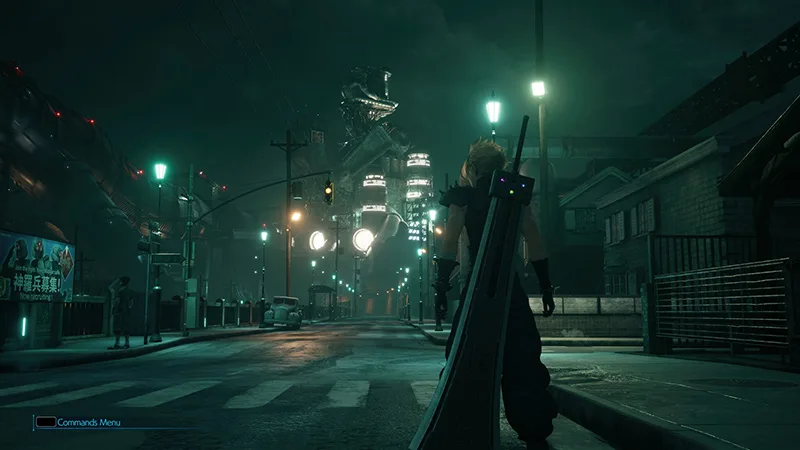
Introduction
Final Fantasy VII’s release in 1997 marked a defining moment in gaming history, introducing players to Midgar—a city that would revolutionize digital world-building. This dystopian metropolis didn’t just push technical boundaries; it demonstrated how environmental design could elevate video game storytelling to new heights, influencing developers and captivating players for generations to come.
A Revolution in Digital Architecture
The year was 1997, and the gaming world was about to witness a revolution. As players inserted the first disc of Final Fantasy VII into their PlayStation consoles, few could have predicted they were about to encounter one of the most influential digital cities ever created. Midgar, a towering metropolis of steel and shadow, would redefine what was possible in video game world-building and environmental storytelling.
The Cultural Watershed
Final Fantasy VII marked the moment when video games proved they could deliver emotional storytelling on par with films and literature. While the game is consistently ranked among the best RPGs of all time, it was Midgar that first grabbed players by the throat and refused to let go. The city’s dark atmosphere and complex themes demonstrated that FFVII storytelling could tackle serious subjects through environmental design alone.
FFVII Midgar: A New Standard in World Building
The impact was immediate and lasting. Midgar’s innovative blend of cyberpunk aesthetics and industrial design influenced countless games that followed. Its dark, mechanized vision of urban life became a touchstone for developers looking to create compelling dystopian environments. The way it used physical space to tell stories about social inequality set new standards for environmental storytelling in gaming.
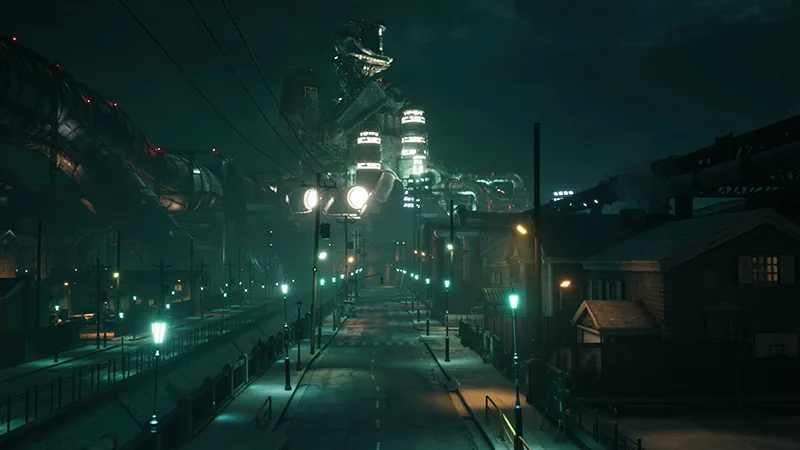
The Living City: Inside Final Fantasy 7 Midgar
Midgar stands as one of gaming’s most iconic urban landscapes—a multilayered metropolis where engineering ambition meets social disparity. This examination reveals how the city’s distinctive design, from its suspended plates to its shadowed slums, creates a world that’s both technically fascinating and rich with meaning, serving as the perfect stage for Final Fantasy 7’s epic narrative.
How Big is Midgar: Scale and Ambition
One of the most common questions about the game remains: “how big is Midgar?” The Final Fantasy 7 city spans approximately six kilometers in diameter, making it comparable to many real-world city centers. However, it’s not just the horizontal spread that impresses—Midgar’s design true innovation lies in its vertical structure, with massive plates suspended 50 meters above ground level creating two distinct worlds within one metropolis.
Engineering Marvel
The physical structure of Midgar FF7 is an engineering feat that would be impossible in reality, yet feels utterly believable within the game’s world. Eight massive steel plates, each supported by enormous pillars, create the upper city. These plates are arranged in a circular pattern, divided into numbered sectors, with the Shinra Building rising from the center like a modern Tower of Babel.
Infrastructure and Innovation
The beating heart of Midgar Final Fantasy lies in its complex network of systems. Each sector’s plate functions as a self-contained urban environment, complete with residential districts featuring modern apartments and amenities. Commercial zones buzz with activity, while carefully maintained parks and public spaces create an illusion of natural life. The upper plate of Midgar houses local governance facilities, all controlled by Shinra, maintaining tight control over these elevated paradises.
Mako Reactors FF7
Surrounding the city, eight Mako reactors stand as colossal monuments to Shinra’s technological dominance. These massive structures extract energy directly from the planet, powering the entire city’s electrical grid. Yet their imposing presence serves as a constant reminder of the environmental cost of Midgar’s prosperity, their impact visible in the barren wasteland surrounding the city.
Life in Midgar Slums
Beneath each sector plate, a different world exists in perpetual twilight. The Final Fantasy Midgar slums have developed their own ecosystem, where necessity breeds innovation and survival requires ingenuity. Makeshift housing rises from salvaged materials, while informal economies thrive in the shadows. Communities form around surviving infrastructure, and in rare spots where natural light breaks through the plates, precious flowers manage to grow—symbols of hope and resilience in the darkness.
Transportation and Control
Movement through Midgar’s sectors flows through an elaborate train system connecting all areas. Security checkpoints control movement between levels, while service elevators enable plate maintenance. The resistance groups in Midgar have learned to navigate this infrastructure, using hidden passages and forgotten maintenance routes to evade Shinra’s watchful eyes.
Environmental Storytelling
Every aspect of Midgar’s architecture tells a story. The contrast between the sterile, ordered upper plates and the organic chaos of the FF7 slums reflects the game’s themes of control versus freedom. The Mako reactors’ ominous presence serves as a constant reminder of environmental exploitation, while the sectored design emphasizes the division and control of the population.
A Living, Breathing Entity
What sets Midgar Final Fantasy 7 apart from other video game cities is how alive it feels. Every sector, every street, every building seems to have a purpose and a story. The city of Midgar doesn’t exist merely as a backdrop for the player’s adventures—it’s a character in its own right, with its own arc, conflicts, and development throughout the narrative.
The City as Metaphor
Midgar’s world-building serves as a powerful metaphor for numerous social and political themes. Its vertical structure physically manifests class division, while its resource-dependent nature reflects real-world environmental concerns. The Final Fantasy 7 setting mirrors political division through its sectored design, and its centralized control structure represents the concentration of power in corporate hands.

Power & Politics in FFVII Midgar
Beneath Midgar’s imposing steel facade lies a complex web of social control, corporate dominance, and resistance. The city’s very architecture serves as a tool for maintaining power, with Shinra Electric Power Company orchestrating every aspect of life from its towering headquarters. This examination reveals how Midgar’s political landscape shapes not just its physical structure, but the lives and destinies of everyone who calls this dystopian metropolis home.
Social Classes and Division
Final Fantasy VII Midgar’s physical structure serves as more than just an architectural marvel—it’s a deliberate manifestation of social control. The plate system in FF7 doesn’t just divide the city; it divides society itself. Those who live on the upper plate Midgar enjoy sunlight, clean air, and modern amenities, while the residents of the Midgar slums below exist in a perpetual twilight, breathing recycled air tainted with industrial pollution.
Corporate Control
The Shinra Electric Power Company presence in Midgar extends far beyond its towering headquarters. Every aspect of life, from energy distribution to media control, falls under Shinra’s influence. The corporation maintains its grip through a sophisticated system of propaganda, military force, and economic dependence. Citizens of the upper plate Final Fantasy 7 live in relative comfort, but this comfort comes at the price of complicity with Shinra’s regime.
Life in the Shadows
In the FF7 slums beneath Midgar, a different society thrives. Here, away from Shinra’s control, communities have developed their own systems of governance and commerce. The absence of official infrastructure has led to the emergence of informal economies, where survival often depends on personal relationships and unwritten rules. The Sector 7 slums often display stronger community bonds than their upper-plate counterparts.
Environmental Crisis
At the heart of Midgar’s story lies its environmental message. The Mako reactors that power the city literally drain the planet’s lifeforce, creating a visible dead zone around the metropolis. This exploitation serves as a powerful metaphor for corporate greed and environmental destruction, themes that resonate even more strongly with modern audiences than they did in 1997.
Military Presence and Control
The visible face of Shinra’s power comes in the form of SOLDIER, an elite military force enhanced by Mako energy. Their presence serves both as protection and intimidation, reminding citizens of Shinra’s absolute power. The regular army patrols the streets of Midgar, maintaining order through force while defending against threats to the company’s interests.
Resistance Movements
Against this backdrop of corporate control, AVALANCHE FF7 emerges from the slums. These resistance groups challenge Shinra’s authority through direct action, targeting Mako reactors and other symbols of corporate power. Their activities highlight the desperation of those willing to risk everything to oppose Shinra’s dominance over Midgar Final Fantasy 7.
Cultural Identity and Community
Despite Shinra’s attempts to create a homogeneous corporate culture, each area of Midgar maintains distinct cultural identities. From the entrepreneurial spirit of Wall Market to the tight-knit community of Sector 7, these local cultures provide resistance against complete corporate control. The Final Fantasy 7 world shows how communities persist even under oppressive conditions.
Economic Systems
The economic structure of Midgar perpetuates its social divisions. While upper plate residents enjoy stable employment and access to services, those in the slums struggle with informal economies and limited opportunities. This economic stratification ensures that social mobility remains nearly impossible, maintaining Shinra’s desired social order in the Final Fantasy 7 city.
Information Control
Shinra’s propaganda machine maintains its power through sophisticated control of information. The Shinra Building itself houses a museum celebrating the company’s achievements, while carefully controlled media outlets present a sanitized version of life in Midgar. Those who question this narrative often disappear, their voices silenced by the Turks, Shinra’s covert operations division.
The Human Impact
The conflict between Shinra and its opponents affects every level of society in Midgar Final Fantasy. The human toll manifests in numerous ways, from mental health issues plaguing both upper and lower plate residents to physical ailments from Mako exposure. The stress of living under constant surveillance and the trauma of social inequality create lasting psychological impacts on the FF7 population.
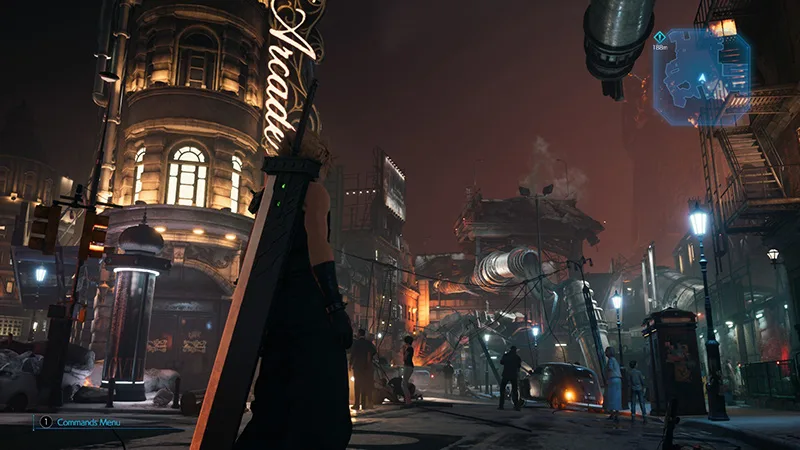
Midgar FF7 Districts & Key Locations
From the depths of its darkest slums to the towering heights of the Shinra Building, Midgar’s districts tell stories of power, hope, and survival. Each location within this massive metropolis serves as more than mere backdrop—it’s a carefully crafted piece of environmental storytelling that enriches Final Fantasy 7’s narrative through its design, purpose, and the communities that call it home.
Iconic Locations
Understanding where is Midgar FFVII begins with exploring its most memorable districts. Each area of this massive city tells its own story, contributing to the larger narrative of Final Fantasy 7’s world. From the heights of the plates to the depths of the slums, every location serves a purpose in the broader tapestry of Midgar’s design.
The Heart of Resistance
When players first enter Midgar, they find themselves in the Sector 7 slums, an area that perfectly encapsulates the city’s stark realities. At its heart stands Seventh Heaven, more than just a bar—it’s a symbol of resistance and community. Tifa Lockhart’s establishment serves as both a gathering place for locals and a secret base for AVALANCHE operations. The surrounding marketplace buzzes with the energy of survivors, where merchants hawk salvaged goods and children play among the ruins.
Nature’s Last Stand
Perhaps no location in Final Fantasy 7 Midgar better represents hope than the abandoned church in Sector 5. Here, amidst the urban decay, Aerith tends to the only flowers that grow in the slums. The church, with its broken roof allowing rare shafts of sunlight to penetrate the plate above, stands as a powerful symbol of nature’s resilience against industrial oppression. The surrounding Sector 5 slums maintains a different character from Sector 7—less militant, more focused on day-to-day survival.
The Entertainment District
No exploration of Midgar Final Fantasy would be complete without delving into Wall Market, the city’s infamous entertainment district. This neon-lit maze of vice and opportunity represents capitalism in its most raw form, operating largely outside Shinra’s control. Don Corneo’s mansion looms over the district, while establishments like the Honeybee Inn offer entertainment that ranges from innocent to risqué.
The Shinra Building FF7
Rising from the center of Midgar, the Shinra Building represents corporate might made manifest. Its 70 floors house everything from public museums celebrating Shinra’s achievements to top-secret research facilities. The building’s design progressively reveals the corporation’s true nature as players ascend—from the pristine lobby’s propaganda displays to the dark secrets lurking in the science division’s laboratories.
Industrial Heritage
Between sectors lies the Train Graveyard, a haunting reminder of Midgar’s constant evolution. Abandoned rail cars and twisted metal create a maze of industrial decay, now home to urban legends and very real dangers. This area represents the city’s tendency to simply build over its problems rather than address them, creating layers of history beneath the current city.
Energy Sources
Each of Midgar’s eight Mako reactors stands as a fortress unto itself. These massive structures showcase the industrial might of Shinra while simultaneously revealing the environmental cost of Midgar’s power. The reactors’ designs combine industrial functionality with intimidating architecture, meant to inspire awe and fear in equal measure.
Underground Networks
Beneath Midgar’s visible structures lies a network of secret laboratories and research facilities. These hidden spaces, accessible only to Shinra’s most trusted employees, reveal the dark truth behind the company’s technological achievements. The Midgar underground serves as some of the game’s most powerful moments of revelation.
Transportation Systems
Midgar’s train system serves as more than mere transportation—it’s the lifeblood of the city, connecting its disparate sectors and social classes. The various train stations and security checkpoints tell their own stories about control, surveillance, and resistance. Each train car becomes a microcosm of Final Fantasy 7’s society, where class divisions play out in assigned seating and restricted access.
Community Spaces
Despite Shinra’s attempts at control, the people of Midgar create their own communal spaces. From makeshift markets in the slums to regulated parks on the upper plate, these areas reveal how different social classes experience community and connection. The contrast between official and unofficial gathering places highlights the divide between Shinra’s vision and its residents’ actual needs. These spaces serve as crucial focal points for social interaction, resistance organization, and cultural preservation, proving that even under oppressive conditions, communities find ways to thrive and maintain their identity.
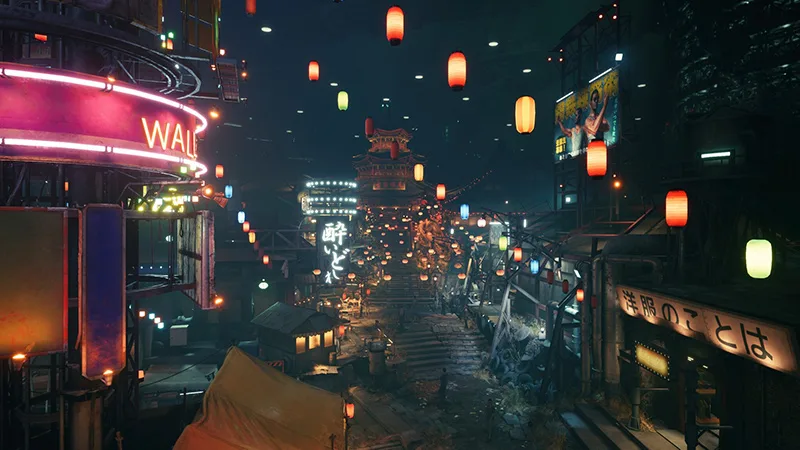
Final Fantasy 7 Midgar: Technical Achievement & Legacy
At the dawn of 3D gaming, a digital metropolis emerged that would forever change how virtual worlds were crafted. Midgar wasn’t just another backdrop for adventure—it was a technical marvel that demonstrated how creative vision, when pushed to its limits, could transcend hardware limitations to create something truly unforgettable. From its groundbreaking visuals to its haunting soundscape, the city stands as a testament to innovation that continues to inspire creators across all digital media.
Revolutionary Presentation
With the release of Final Fantasy VII in 1997, Midgar unveiled something unprecedented in gaming. The city’s presentation pushed the original PlayStation’s hardware to its limits, combining pre-rendered backgrounds with real-time character models in ways that had never been seen before. Each screen of FF7 Midgar was meticulously crafted to tell its own story, creating an atmosphere that would influence game design for decades to come.
Visual Innovation
The decision to use pre-rendered backgrounds for Midgar Final Fantasy 7 wasn’t just a technical necessity—it was an artistic triumph. This approach allowed the developers to create incredibly detailed environments that would have been impossible with the real-time 3D graphics of the era. The Final Fantasy 7 graphics set new standards for visual storytelling in gaming, particularly in how they conveyed scale and atmosphere.
Atmospheric Design
Nobuo Uematsu’s iconic soundtrack played a crucial role in bringing Midgar to life. The industrial sounds of the city blend seamlessly with the music, creating an audio landscape that enhances the player’s immersion. The FF7 soundtrack perfectly captured the essence of both upper plate luxury and slum survival, contributing to the game’s lasting impact.
Gaming Evolution
Midgar’s impact on video game world-building cannot be overstated. Its success proved that a game’s setting could be as crucial to narrative development as its characters and plot. The way Final Fantasy 7 storytelling approached environmental narrative influenced countless games that followed, from indie titles to major releases.
Design Legacy
The cyberpunk elements of Midgar helped establish new conventions for how dystopian futures could be portrayed in gaming. Its unique blend of industrial design, fantasy elements, and social commentary influenced countless games that followed. The way Midgar’s design balanced realistic architectural principles with fantastic elements created a template for believable impossible worlds.
Modern Reimagining
The Final Fantasy 7 Remake faced the monumental task of reimagining Midgar for modern hardware while preserving its iconic atmosphere. The development team expanded the original’s vision, transforming brief visits to various sectors into fully realized environments. This expansion allowed players to explore previously unseen areas of the city, adding depth to Midgar’s Remake lore.
Built using Unreal Engine 4, Final Fantasy VII Remake showcases how modern game engines can transform beloved classics while maintaining their core essence. The game stands among other groundbreaking Unreal Engine titles that demonstrate the engine’s versatility across genres and art styles.
Unreal Engine Games: Best 17 UE4 and UE5 Games
Discover 17 Best Unreal Engine games that will blow you away! Explore stunning visuals and dive deeper into the future of game development.
Contemporary Technology
Modern technology allowed the remake to realize Midgar in ways that were impossible in 1997. Real-time lighting, detailed textures, and complex atmospheric effects brought new life to familiar locations. The ability to seamlessly transition between areas without loading screens created a more cohesive sense of FFVII Remake Midgar as a single, massive city.
Enduring Themes
Midgar’s themes of corporate power, environmental destruction, and social inequality remain startlingly relevant today. Modern players exploring Final Fantasy 7 world often find the city’s commentary on these issues even more pointed than audiences did in 1997. This enduring relevance speaks to both the prescience of the original design and the universal nature of its themes.
Developers and artists continue to find inspiration in Midgar’s design. Its influence can be seen not only in video games but in architecture, film, and other forms of media. The city serves as a touchstone for discussions about how virtual environments can convey complex social and political messages in the gaming industry. Final Fantasy VII‘s masterful world-building and societal commentary secured its place among the 18 Legendary Top Games of All Time That Transformed Culture, where you can discover other revolutionary titles that changed gaming forever.
18 Legendary Top Games of All Time That Transformed Culture
Explore top games of all time that transformed culture, shaped societies, and redefined entertainment, from arcade classics to modern masterpieces.
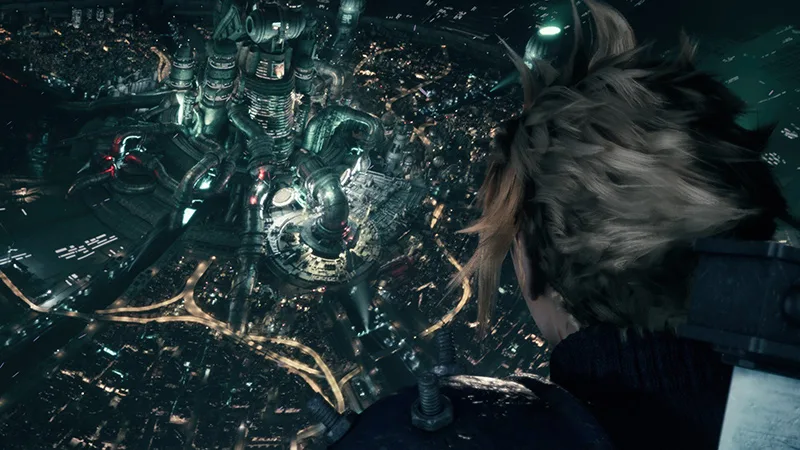
Conclusion: The City That Changed Gaming
Midgar stands as more than just a setting in a beloved game—it represents a turning point in how video games approach world-building and storytelling. Its combination of technical innovation, artistic vision, and thematic depth helped establish video games as a mature medium capable of addressing complex issues. The legacy of Final Fantasy 7 Midgar lives on, not just in remakes and reimaginings, but in the countless games it influenced and the boundaries it pushed. As we look to the future of gaming, Midgar remains a testament to the power of virtual spaces to capture our imagination and challenge our perspectives.
Midgar FAQ: Common Questions Answered
How big is Midgar in Final Fantasy 7?
Midgar spans approximately 6 kilometers in diameter, with eight distinct sectors arranged in a circular pattern. The upper plates are suspended roughly 50 meters above the ground. In the FF7 Remake, this scale is even more impressive, with fully realized environments making the city feel truly massive. Each sector is approximately the size of a small district, housing thousands of residents both above and below the plates.
What is Midgar’s significance in Final Fantasy 7?
Midgar serves as both the opening location of Final Fantasy VII and a central symbol of the game’s themes. As the headquarters of the Shinra Electric Power Company, it represents corporate power, environmental exploitation, and social inequality. The city’s unique design, with wealthy citizens living on plates above the impoverished slums, physically manifests these themes. Midgar’s influence on gaming design and storytelling continues to resonate decades after the game’s release.
Where exactly is Midgar located in FF7’s world?
Midgar is located on the Eastern Continent of Final Fantasy 7’s world map, situated in a barren wasteland. This location isn’t coincidental—the area around the city has been stripped of life by the Mako reactors, creating a dead zone that extends for miles. The city’s isolated position emphasizes both its dominance over the region and its devastating environmental impact.
Can you return to Midgar later in FFVII?
In the original Final Fantasy 7, players cannot freely return to Midgar once they leave the city, though they do revisit it during specific story events later in the game. This limitation adds to the city’s impact—leaving Midgar marks a crucial turning point in the narrative. The FF7 Remake expands on this by making the entire first game take place within Midgar, allowing for deeper exploration of the city.
How are the Midgar slums organized?
The Midgar slums are divided into numbered sectors, each lying beneath its corresponding upper plate. Notable areas include the Sector 7 slums with the Seventh Heaven bar, Sector 5 containing Aerith’s church, and the infamous Wall Market entertainment district. Each sector has its own distinct character and community, despite existing in the perpetual shadow of the plates above.
What powers Midgar in Final Fantasy 7?
Midgar is powered by eight Mako reactors positioned around its perimeter. These reactors extract Mako energy—the planet’s lifeforce—to generate electricity for the city. This energy system is central to both Midgar’s function and the game’s environmental themes. The Shinra Electric Power Company controls these reactors, giving them nearly absolute power over the city’s infrastructure.
How was Midgar reimagined in FF7 Remake?
The Final Fantasy 7 Remake dramatically expanded Midgar’s scope and detail. Previously condensed areas were fully realized, with new locations and side stories enriching the city’s lore. The remake maintained the original’s atmosphere while adding unprecedented detail to both the slums and upper plates. Modern technology allowed for seamless transitions between areas, making Midgar feel more like a cohesive, living city than ever before.
What are your favorite memories of Midgar? Share your thoughts in the comments below!
Want more insights like this? Subscribe to my newsletter for weekly updates!






